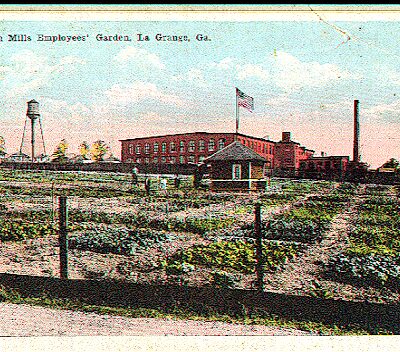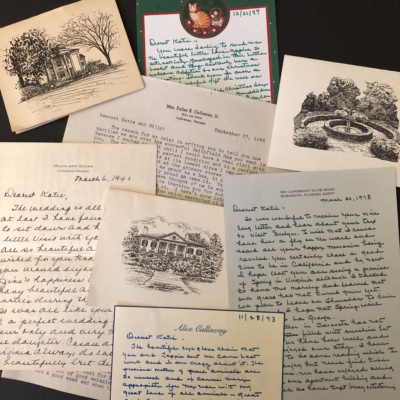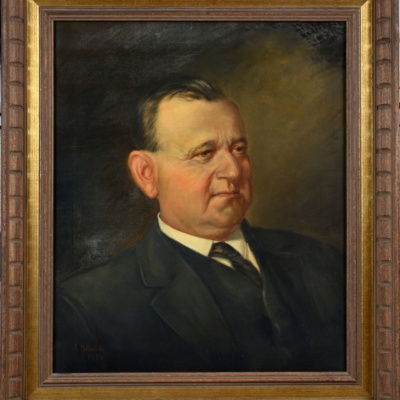A Few Favorite Things
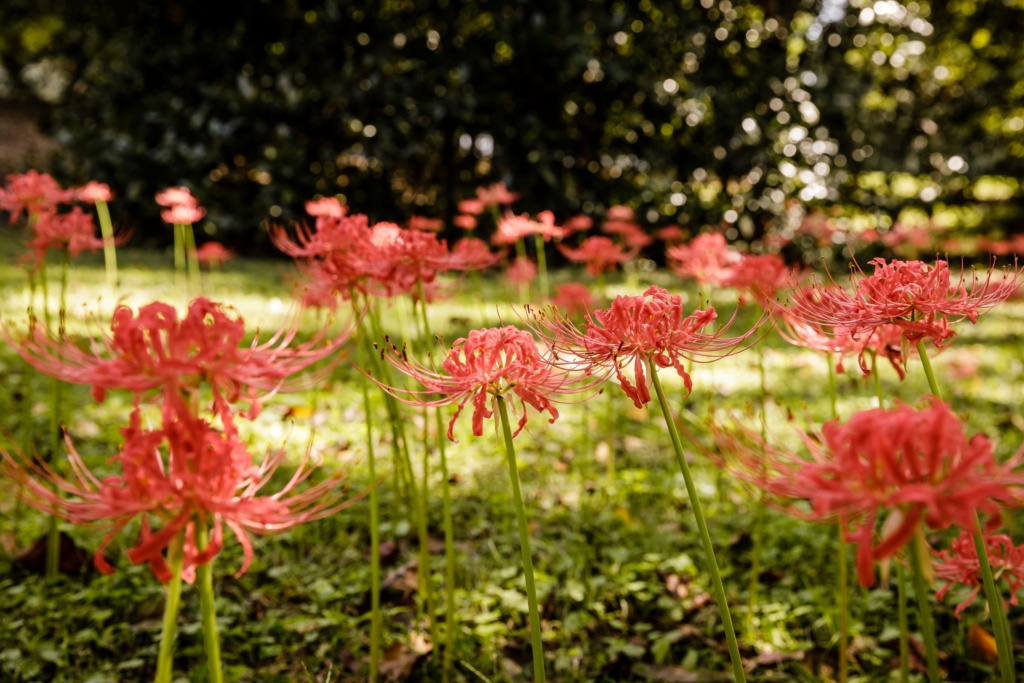
This article has been very challenging to write. How does one sum up a 28-year span of loving and caring for a place in a short piece? The tack decided on was to make a partial list of things I find evocative about this remarkable home and garden, and also that any interested visitor could see or experience. Naturally, some occur seasonally and since we are now on the threshold of autumn, this time of year seems a good place to begin.
- The Herb Garden in late summer—it is full, lush, and redolent.
- The marvelous quality that sunlight begins to have in the fall. Luminous shafts highlight the garden’s paths and colors seem to nearly glow.
- The field of red spider lily flowers (Lycoris radiata) in September.
- The fragrance of tea olive in October. There are enough planted to permeate the entire landscape around the home, and it is heavenly. Although heaviest bloom occurs in fall, and the orange flowered ones only bloom then, the more common Osmanthus fragrans blooms intermittently through winter into spring.
- Fall color on the old Ginkgo, of course, although its leaves don’t turn fully gold until very late November or early December. It is magnificent, and was planted over 150 years ago. If you’ve never seen it, plan to if possible.
- Seeing the home decked out for the Christmas season and smelling the aroma of fresh greenery.
- Experiencing the Church Garden’s Yulan magnolia in bloom each winter. Planted in 1968, it is now a huge specimen tree typically in full bloom by mid-February. Its precocious blossoms flirt with getting frozen most years, but regardless, hundreds of goblet-shaped ivory blooms against a blue sky is a site sure to help shake off any winter doldrums.
- Historic daffodils (narcissus) abloom throughout the estate from February through March. Because they were grown by all three women who nurtured this property, we believe they would be pleased with ongoing efforts to plant even more historic varieties.
- The semi-circular stone wall encasing the Sunken Garden. Mrs. Callaway (as I called Alice) would say on her tours that the garden’s walls were built by enslaved masons and that this particular structure had been extensively repaired only once. Amazing!
- The Stephanotis in the greenhouse, with its thick vine twining on a heater pipe upwards to the glass ceiling. The tendrils and foliage thrive, growing on a larger water pipe just below the roof’s peak, and waxy blooms that appear in flushes over spring and summer scent the air. The cutest part is Mrs. Callaway’s explanation of why it was growing way this way—this actually happened during the tour that accompanied my job interview all those years ago. “I didn’t actually intend for it to grow up there,” she stated, “but that’s where it is happy, so I have let it.” I love that anecdote—she was often quite indulgent of the whims of her plants.
- New green growth on the boxwood in spring—so soft and lovely at that stage.
- The plaques with garden verse or quotes on them: there aren’t many, but they’re ones that Alice selected and placed in the garden. One is probably familiar: “The kiss of the sun for pardon, the song of the birds for mirth, one is nearer God’s heart in a garden than anywhere else on earth.” This anonymous verse must have had special meaning to her, because there are two examples of it here. Another, said to be a Chinese proverb, states, “He who plants a garden plants happiness.” Perhaps my most favorite has this quote from poet and artist Minnie Aumonier, “There is always music amongst the trees in the garden, but our hearts must be very quiet to hear it.”
Ah, the more items I put down, the more that come to mind, and it is very hard to limit their number. There are lovely views and singular features in abundance, but for the sake of time and space, I will end with one more, special because of the story associated with it. When I began working at Hills & Dales, Mrs. Callaway had a salmon-pink geranium with single blooms potted in the greenhouse that was likely grown from seed originally. She shared with me that her sister, Virginia Callaway, had given the first one to her years earlier. (Remember that these two women were siblings who had each married a Callaway brother.) During a visit with Sister, as she called Virginia, Alice had admired pots of these geraniums around the swimming pool at Blue Springs, particularly because she declared their peachy shade of pink her favorite flower color of all. Over the ensuing years, she had kept cuttings going of this sentimental plant so that a vigorous young one was coming along at all times. A label inserted into the pot would have “Sister’s” penciled in her neat script. To this day, we still have Sister’s geranium growing in the greenhouse, plus often in containers outside during the summer. Pieces are rooted in sand just as before so that this flower and the touching story attached to it will continue to live on. In truth, this sweet narrative completely captures my hope for this entire property—that its portrayal of being a personal home and garden will remain a focus and a priority for many years to come. -JP

Spider lilies (Lycoris radiata), a sure sign fall is on its way. |
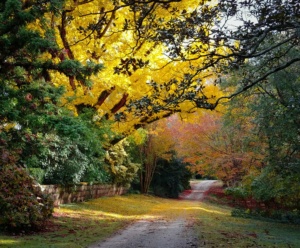
The late November color of the maidenhair tree (Ginkgo biloba) casts a lovely yellow glow on the garden. |
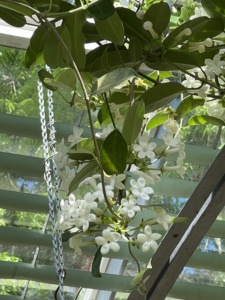
The fragrant Stephanotis (Stephanotis floribunda), also known as the Madagascar Jasmine, climbs to the top of the greenhouse. |

One of Alice Callaway’s various garden plaques. Each one is inscribed with a memorable quote. |
View this entire Portico Newsletter:
